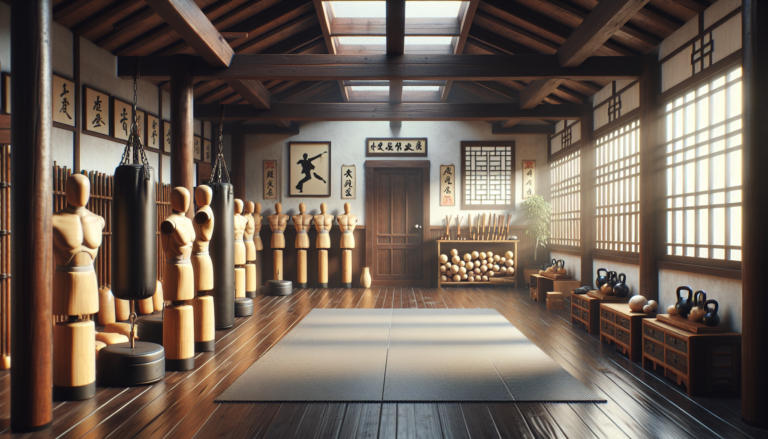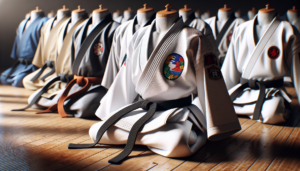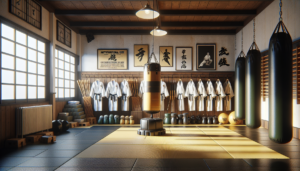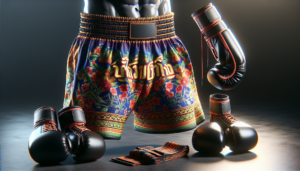Wing Chun is a traditional Southern Chinese martial art known for its focus on close-range combat, efficiency, and directness. It emphasizes practical techniques and quick reflexes to empower smaller individuals against larger opponents. Wing Chun is not just a fighting style but a complete system of self-defense that promotes physical fitness, mental focus, and emotional control.
In this comprehensive guide, we will explore the history, philosophy, key techniques, and benefits of Wing Chun. We will also look at some famous practitioners and the martial art’s place in modern times. Whether you are a beginner or an experienced martial artist, this article will provide valuable insights into the world of Wing Chun.
Introduction to Wing Chun
The Origins of Wing Chun
The origins of Wing Chun can be traced back to the legendary figure Yim Wing Chun, who is said to have developed the martial art with the help of a monk named Ng Mui. According to the story, Ng Mui was inspired by the movements of a snake and a crane fighting, and used these insights to create a new fighting style that emphasized efficiency and practicality.
Wing Chun was designed to allow a smaller, weaker person to defend themselves against a larger, stronger attacker. It relies on timing, positioning, and effective responses rather than brute strength and speed. This makes it an ideal martial art for people of all sizes and abilities.
Philosophy and Principles
At its core, Wing Chun is a practical martial art focused on self-defense. It is not about competition or flashy techniques, but rather about ending a confrontation as quickly and efficiently as possible. Wing Chun practitioners aim to neutralize an attack and counter immediately, using the attacker’s own force against them.
Some key principles of Wing Chun include:
- Economy of motion – using the most direct and efficient movements
- Simultaneous attack and defense – blocking and striking at the same time
- Centerline control – protecting your own centerline while attacking your opponent’s
- Relaxation and structure – maintaining proper body alignment and staying relaxed
By adhering to these principles, Wing Chun practitioners develop a calm, focused mindset that allows them to respond effectively to any situation. The training also promotes emotional control and inner peace, as students learn to remain centered even under pressure.
Key Techniques in Wing Chun
Wing Chun is known for its unique techniques that differ from many other martial arts. Rather than relying on strength or athleticism, Wing Chun techniques are designed to be simple, direct, and effective. Here are some of the key techniques you will encounter in Wing Chun training:
Hand Trapping and Striking
One of the hallmarks of Wing Chun is its use of hand trapping to control an opponent’s limbs and create openings for strikes. By using sticky hands and quick, precise movements, a Wing Chun practitioner can neutralize an attack and counterattack simultaneously.
Some common hand techniques in Wing Chun include:
| Technique | Description |
|---|---|
| Pak Sau | Slapping hand used to deflect incoming strikes |
| Tan Sau | Palm-up hand used to redirect strikes |
| Bong Sau | Wing arm used to protect the centerline |
These techniques are combined with fast, powerful strikes aimed at vulnerable targets like the eyes, throat, and groin. The goal is to end the confrontation quickly with a flurry of attacks that overwhelm the opponent.
Chi Sao (Sticking Hands)
Chi Sao, or “sticking hands,” is a unique training method in Wing Chun that develops sensitivity, reflexes, and the ability to “read” an opponent’s energy. In Chi Sao, two practitioners maintain constant contact with each other’s arms while executing techniques, allowing them to feel changes in pressure and respond instinctively.
Chi Sao training progresses through several stages:
1. Single sticky hand – one-armed rolling and techniques
2. Double sticky hands – two-armed rolling and techniques
3. Flowing attacks – freestyle Chi Sao with non-cooperative attacks
Through diligent Chi Sao practice, Wing Chun students develop an uncanny ability to sense and react to an opponent’s intentions. This sensitivity training is a key component of the art’s effectiveness in close-quarter combat.
Wooden Dummy Training
Another iconic training method in Wing Chun is the use of the Muk Yan Jong, or wooden dummy. This wooden apparatus has three arms and one leg, representing an opponent’s limbs. Students practice techniques and footwork against the dummy to develop precision, power, and proper body mechanics.
The wooden dummy form consists of 108 movements that encode the full repertoire of Wing Chun techniques. By training with the dummy, students can practice strikes, blocks, traps, and footwork without the need for a live partner. The dummy also provides resistance and feedback, helping to strengthen the arms and condition the body.
Benefits of Practicing Wing Chun
Physical Benefits
Practicing Wing Chun offers numerous physical benefits, including:
- Improved strength, especially in the core, legs, and upper body
- Increased flexibility and joint mobility
- Better balance and body control
- Enhanced hand-eye coordination and reflexes
- Greater endurance and cardiovascular fitness
The dynamic, full-body movements of Wing Chun provide a challenging workout that can improve overall health and fitness. The low stances and explosive techniques develop leg strength, while the hand techniques build upper body and grip strength. Footwork drills enhance balance and agility.
Mental and Emotional Benefits
In addition to the physical benefits, Wing Chun also offers significant mental and emotional advantages. The focus and discipline required in training can help to:
- Reduce stress and anxiety
- Increase self-confidence and self-esteem
- Improve concentration and mental clarity
- Develop patience and perseverance
- Promote a sense of inner peace and emotional balance
By facing challenges in training and pushing through difficulties, Wing Chun practitioners develop resilience and a “can-do” attitude that carries over into daily life. The emphasis on relaxation, structure, and centerline control also helps to instill a sense of calmness and rootedness.
Famous Wing Chun Practitioners
Throughout its history, Wing Chun has been practiced by many notable martial artists who have helped to spread its popularity around the world. Here are two of the most famous Wing Chun masters:
Bruce Lee and Wing Chun
Bruce Lee, the legendary martial artist and actor, began his training in Wing Chun under the tutelage of Grandmaster Ip Man. Lee studied Wing Chun extensively in his youth and credited it with providing the foundation for his martial arts development.
While Lee eventually moved away from traditional martial arts to create his own style, Jeet Kune Do, he continued to use and teach many Wing Chun concepts and techniques. Lee’s fame helped to bring international attention to Wing Chun and inspire countless people to take up martial arts practice.
Ip Man’s Legacy
Grandmaster Ip Man is perhaps the most influential figure in modern Wing Chun history. A highly skilled practitioner and teacher, Ip Man helped to preserve and spread Wing Chun throughout China and later in Hong Kong.
Many of Ip Man’s students, such as Bruce Lee and William Cheung, went on to become famous martial artists in their own right. Through their teachings and influence, Ip Man’s lineage has become one of the most widely practiced branches of Wing Chun in the world today.
Ip Man’s life story has been celebrated in numerous books, films, and television shows, cementing his status as a legendary figure in martial arts history. His legacy continues to inspire new generations of Wing Chun practitioners around the globe.
Wing Chun in Modern Times
Wing Chun in Popular Culture
In recent years, Wing Chun has gained increasing visibility in popular culture through movies, television shows, and online media. The Ip Man film series, starring Donnie Yen, has been particularly successful in bringing Wing Chun to a mainstream audience.
On YouTube, there are now many channels dedicated to Wing Chun, such as:
- The Dragon Institute
- Traditional Wing Chun Kung Fu
- Budo Brothers (featuring Sifu Francis Fong)
These channels offer instructional content, interviews, demonstrations, and discussions about Wing Chun training and philosophy. They have helped to create a thriving online community of Wing Chun enthusiasts and practitioners around the world.
Comparisons with Other Martial Arts
As Wing Chun has gained popularity, it has also faced increased scrutiny and comparison with other martial arts. Some common points of comparison include:
| Martial Art | Similarities | Differences |
|---|---|---|
| Boxing | Emphasis on striking, footwork, efficiency | Lack of kicks, clinching, trapping |
| Kickboxing/Muay Thai | Use of strikes, close-range fighting | Larger repertoire of kicks, clinch work, competition focus |
| Brazilian Jiu-Jitsu (BJJ) | Leverage and technique over strength, practicality | Ground fighting focus, submission holds, competition format |
While these comparisons can be useful for understanding the strengths and limitations of each art, it’s important to remember that all martial arts have value and that the “best” art is the one that aligns with your individual goals and abilities. Many modern martial artists cross-train in multiple styles to become well-rounded fighters.
Ultimately, the effectiveness of Wing Chun or any other martial art depends on the dedication and training of the individual practitioner. With consistent practice and a willingness to learn, Wing Chun can be a powerful tool for self-defense, personal development, and cultivating a healthy, balanced lifestyle.
Conclusion
Wing Chun is a fascinating and effective martial art with a rich history and a loyal global following. Its focus on efficiency, practicality, and self-defense sets it apart from many other styles and makes it accessible to people of all ages and abilities.
Through its unique training methods, including Chi Sao, wooden dummy work, and hand trapping techniques, Wing Chun develops a high level of sensitivity, reflexes, and close-range fighting ability. Its principles of relaxation, structure, and centerline control provide a strong foundation for self-defense and personal growth.
While no martial art is perfect, Wing Chun offers significant physical, mental, and emotional benefits to those who practice it diligently. Whether you are looking to learn self-defense skills, get in shape, or cultivate inner peace and confidence, Wing Chun has something to offer.
If you are interested in starting your Wing Chun journey, look for a reputable school or instructor in your area. With dedication and an open mind, you may find that Wing Chun is the perfect martial art for you.






